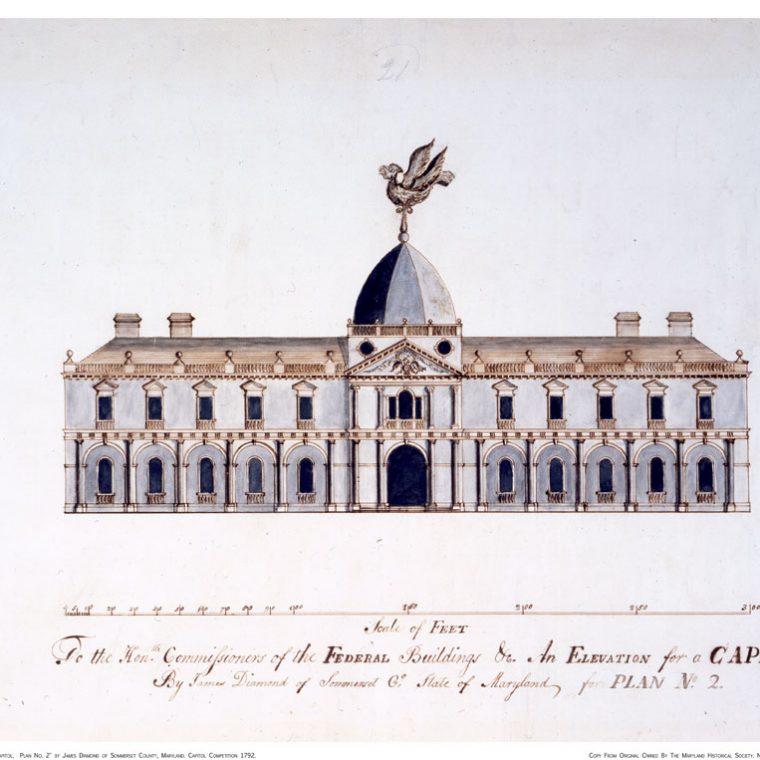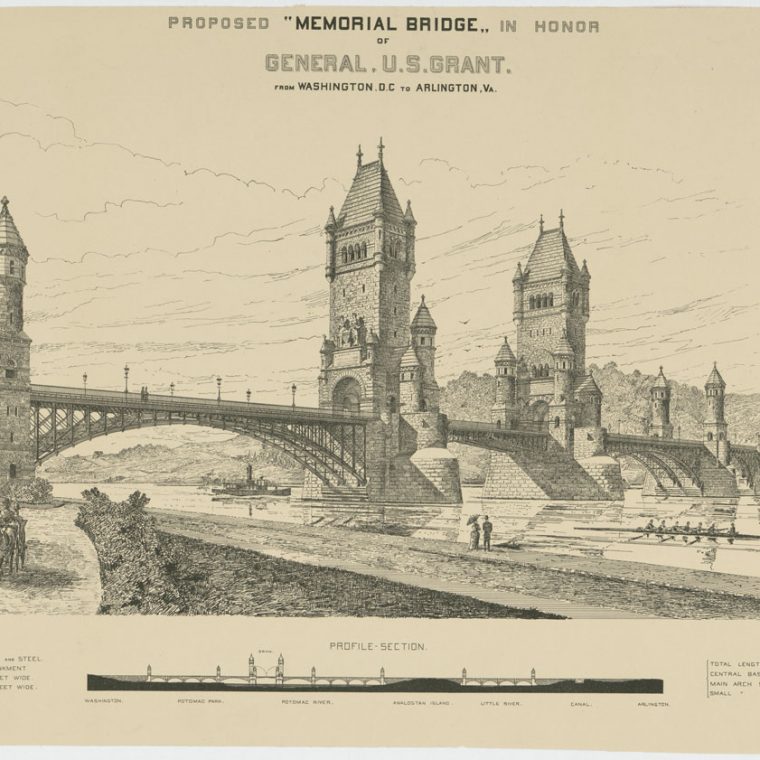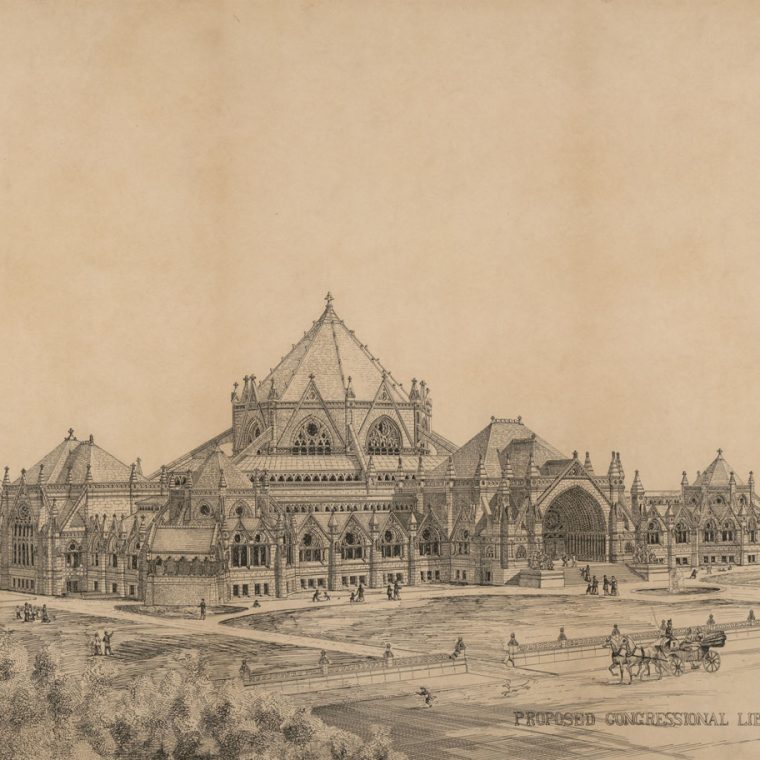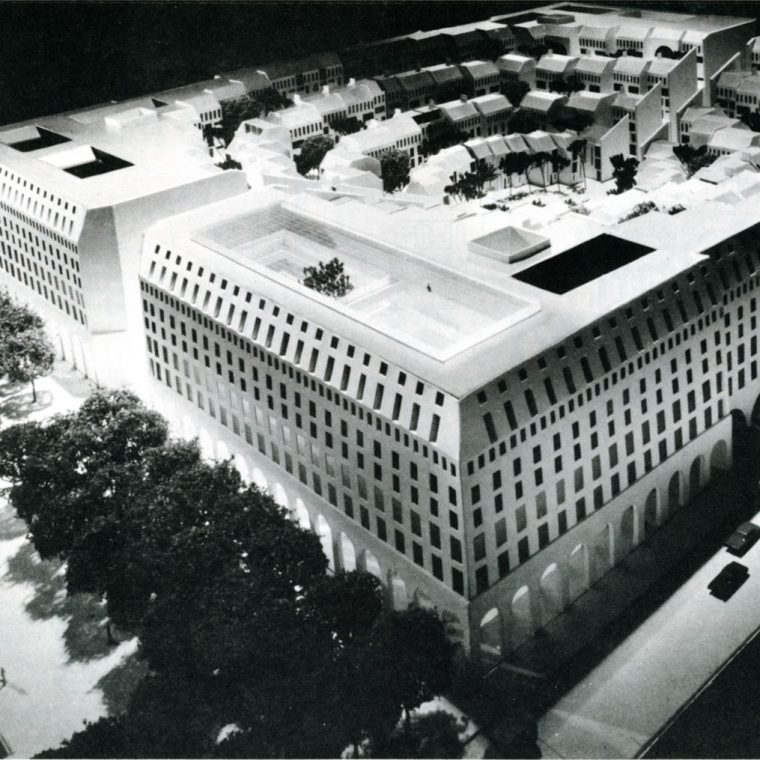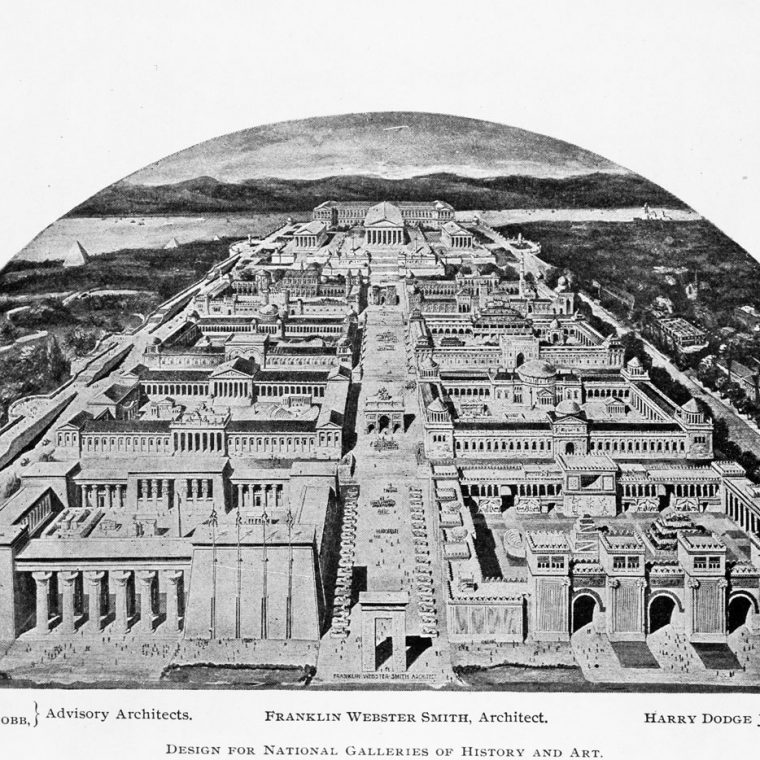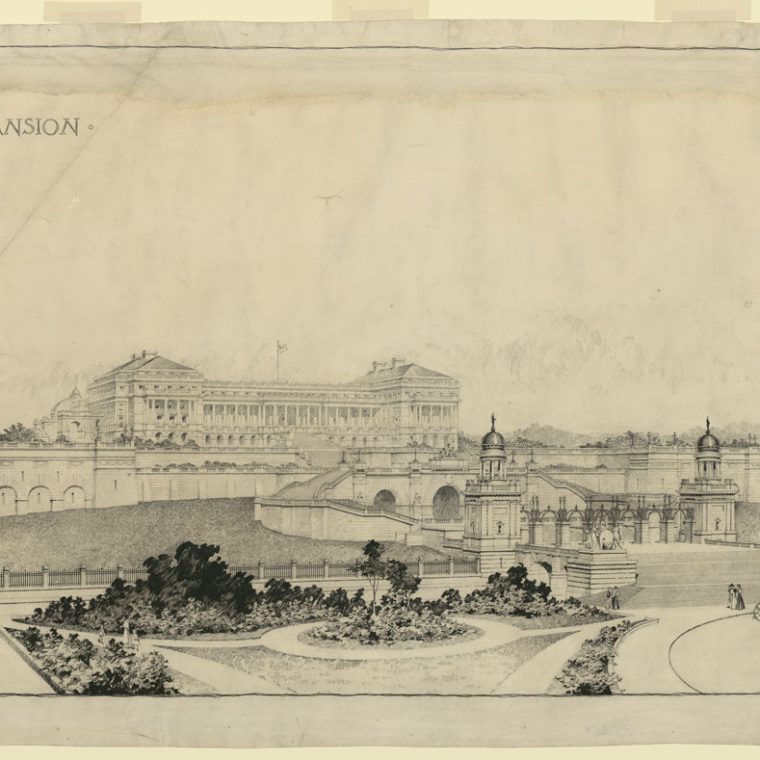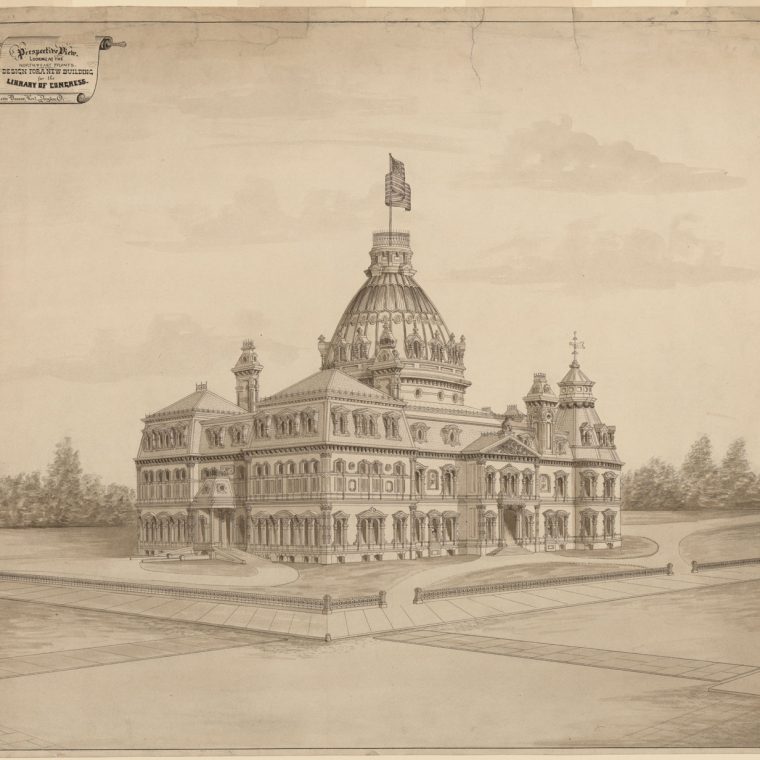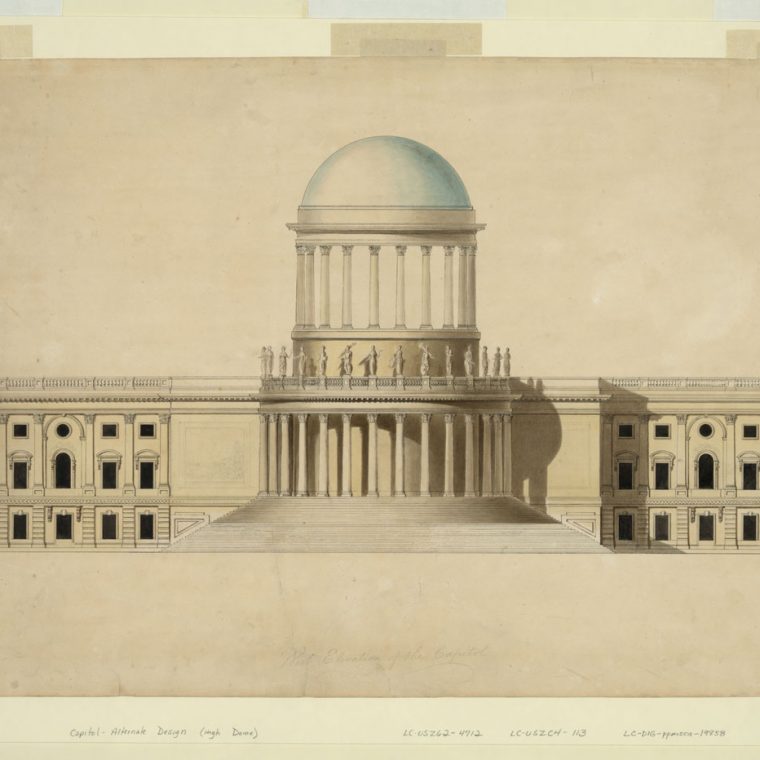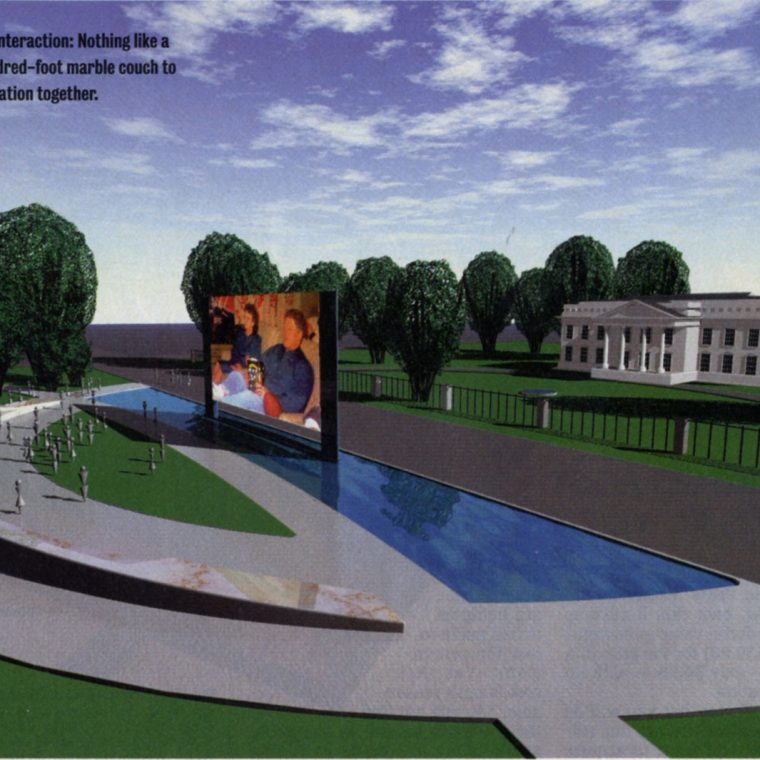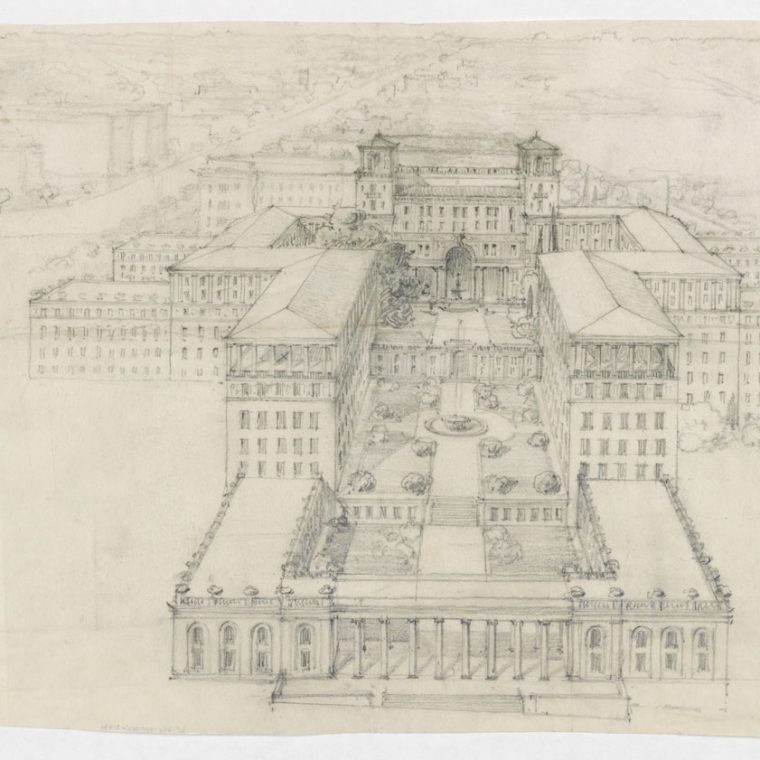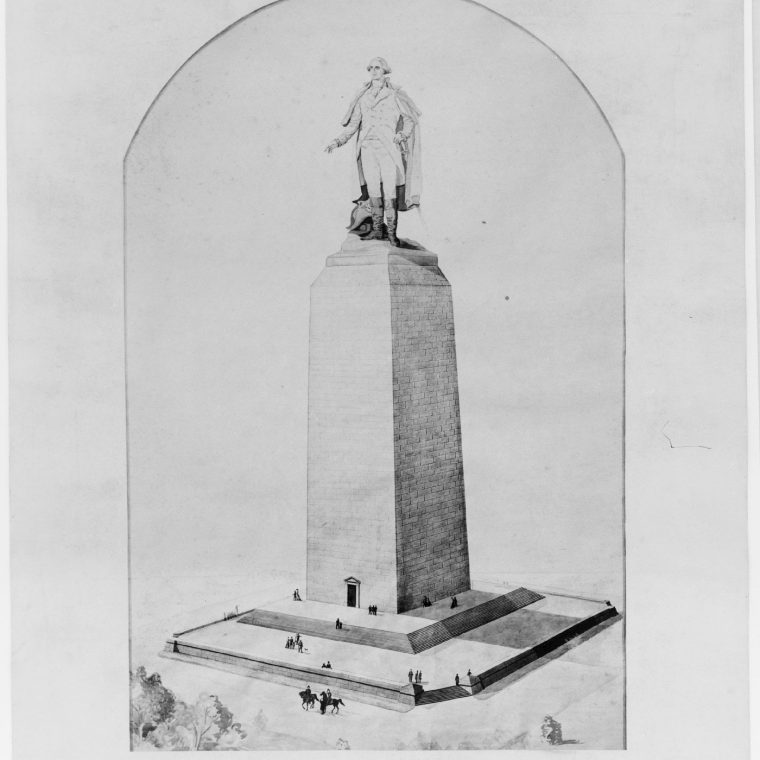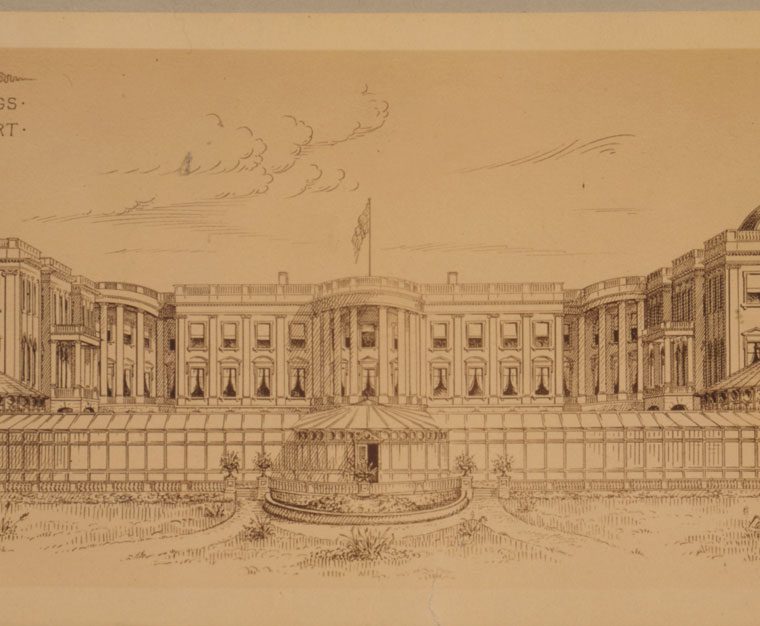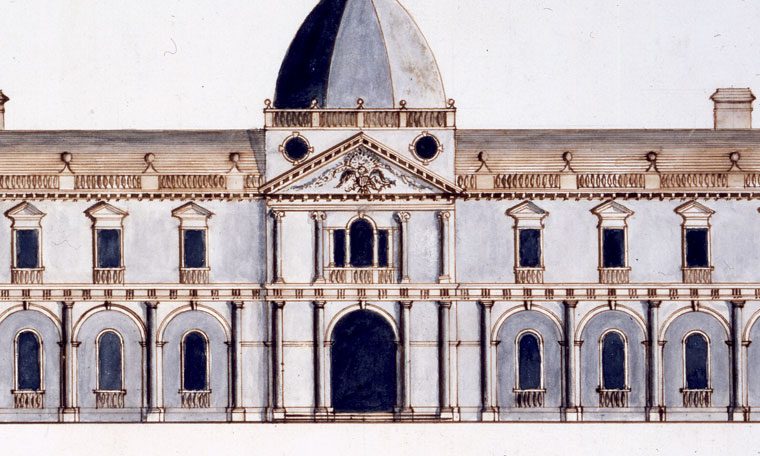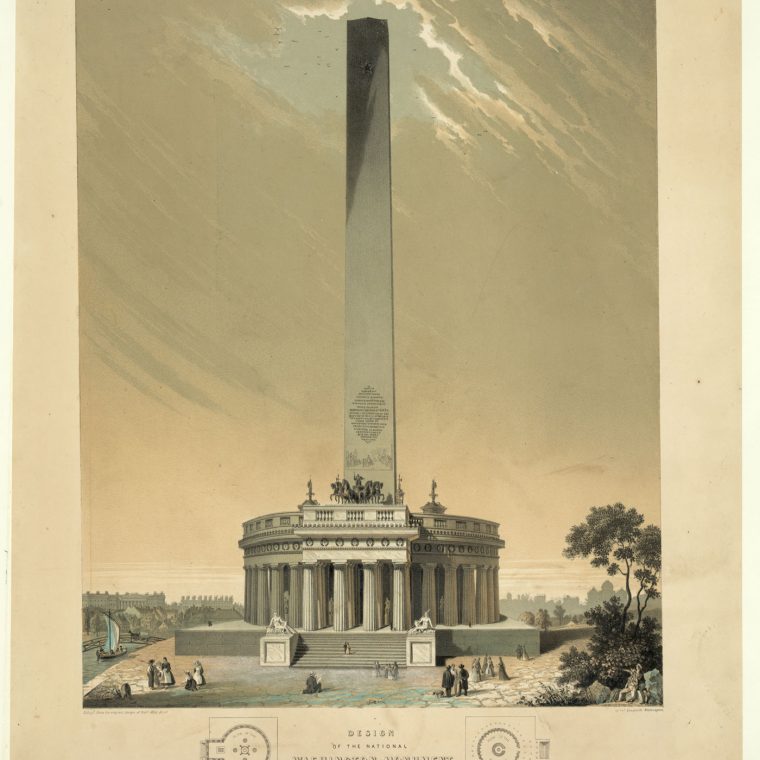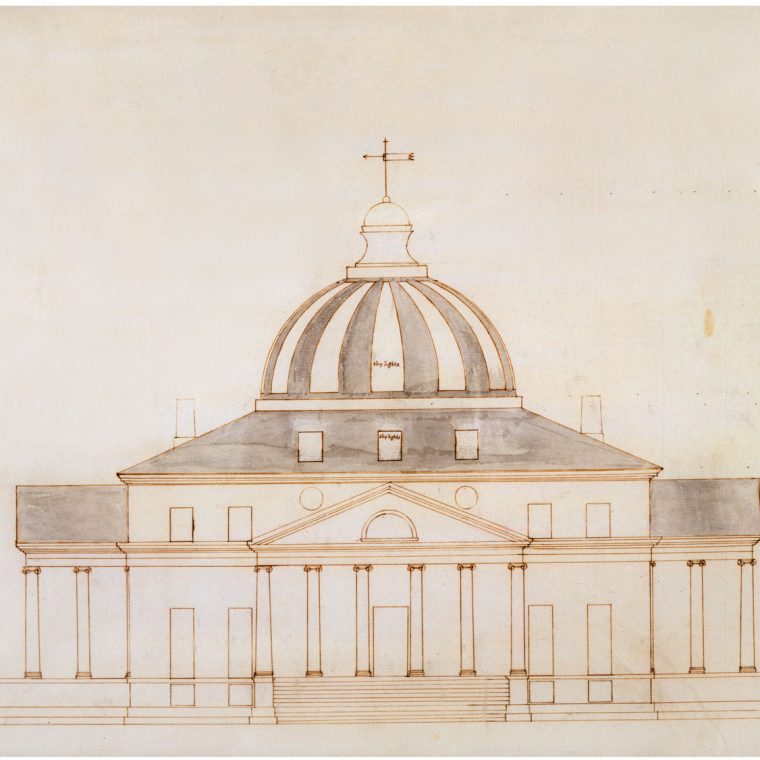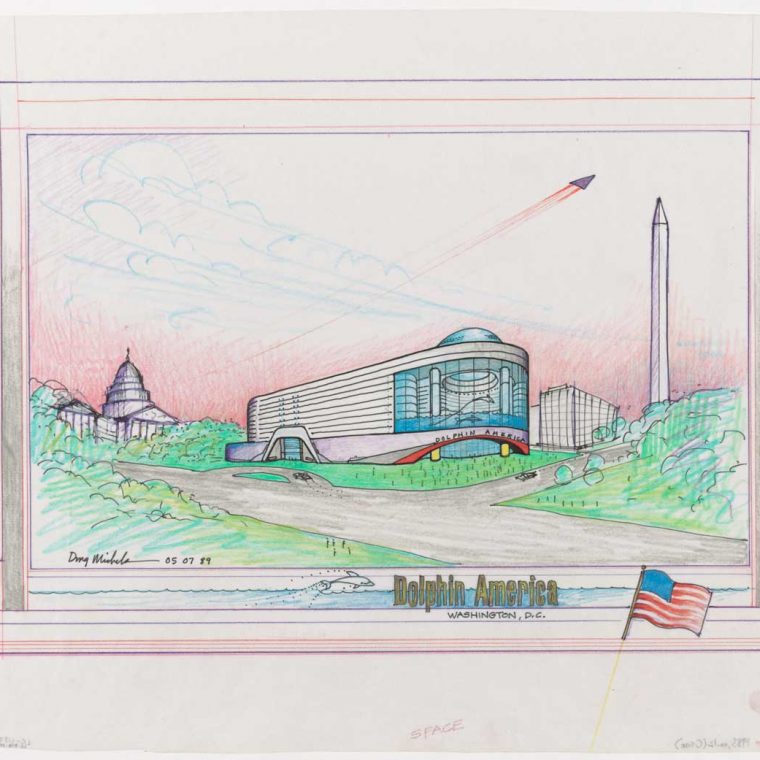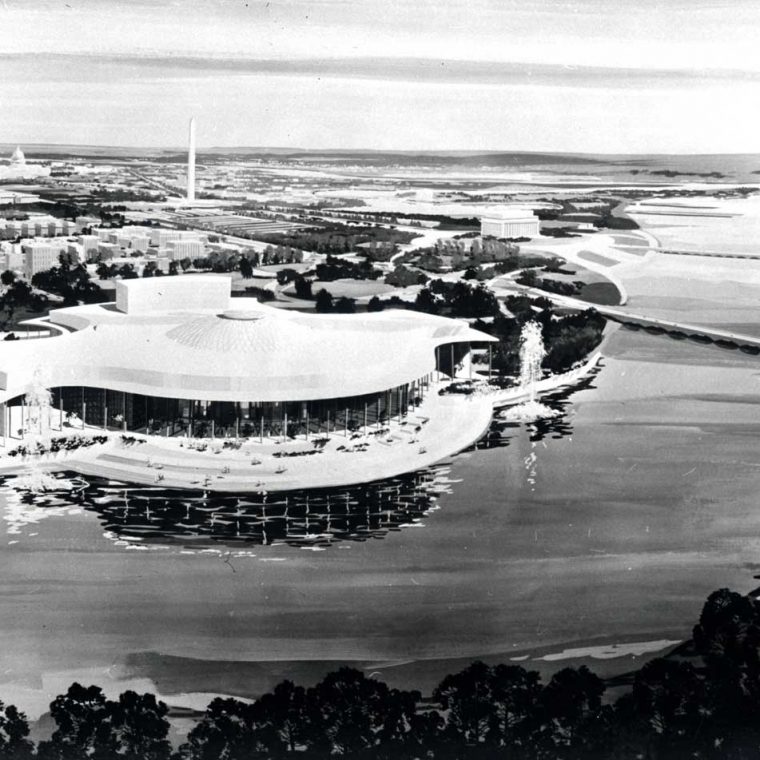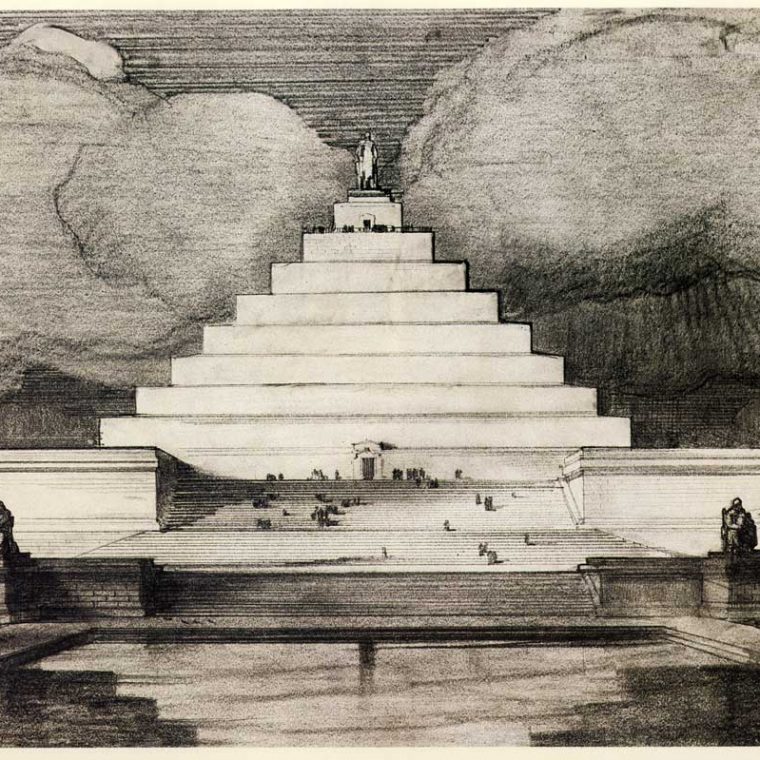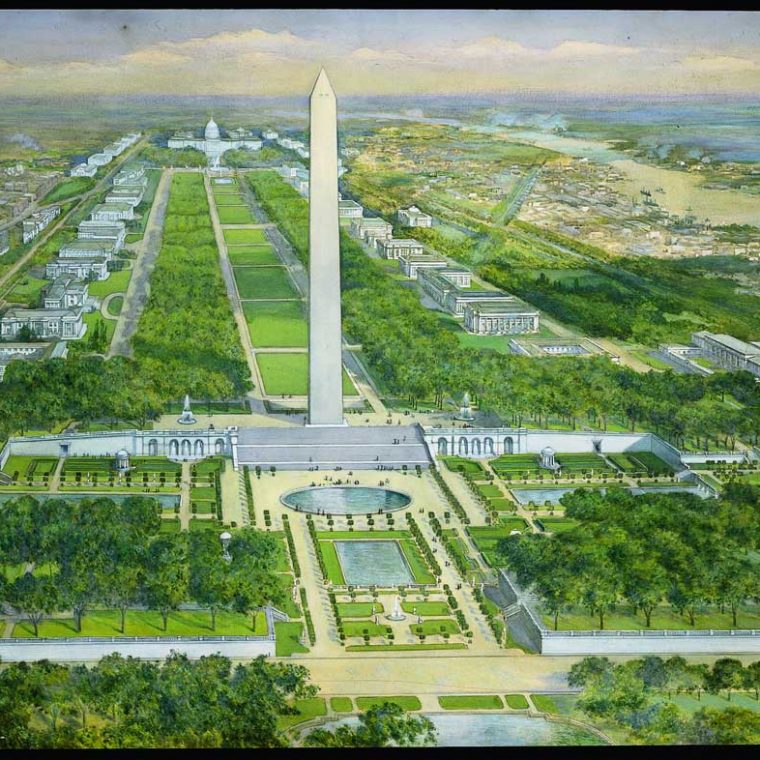November 19, 2011–May 28, 2012

Imagine that you are traveling into Washington, D.C., from northern Virginia. As you approach the Potomac River, you see the tall, craggy, medieval-looking towers of the Ulysses S. Grant Memorial Bridge looming in the foreground, largely blocking the view of the National Mall beyond. As you reach the end of the bridge, now you can clearly see the enormous pyramid that was built to honor Abraham Lincoln. Going around to the side of the pyramid, you note the odd, pagoda-like structure dedicated to George Washington—a design that was executed after the original obelisk had stood unfinished for decades. Surrounding these monuments are informal paths that meander through dense woods, which help to filter the noise from the two elevated highways running along either side of the Mall. Barely visible in the distance is the Capitol, a dignified but modest structure that looks rather like a classroom building at a liberal arts college, topped by a tiny cupola.
Unbuilt Washington reveals the Washington that could have been by presenting architectural and urban design projects that were proposed but, for widely varied reasons, never executed. Such projects often exercised a profound influence on what was built and may offer lessons that inform ongoing debates about the design and development of Washington and other cities. What were the motives, assumptions, and cultural trends underlying such proposals? Why were these designs left unbuilt? What was their impact on projects that were completed?
The physical character of Washington, D.C., that we take for granted today is the unique result of countless decisions, debates, successes, failures, reconsiderations, missed opportunities, and lucky breaks. To tourists and residents alike, the city’s greatest landmarks may seem so appropriate, so correct—it is hard to imagine that they could have turned out completely differently. But nothing in the built environment of Washington (or in any other city, for that matter) is predestined.

